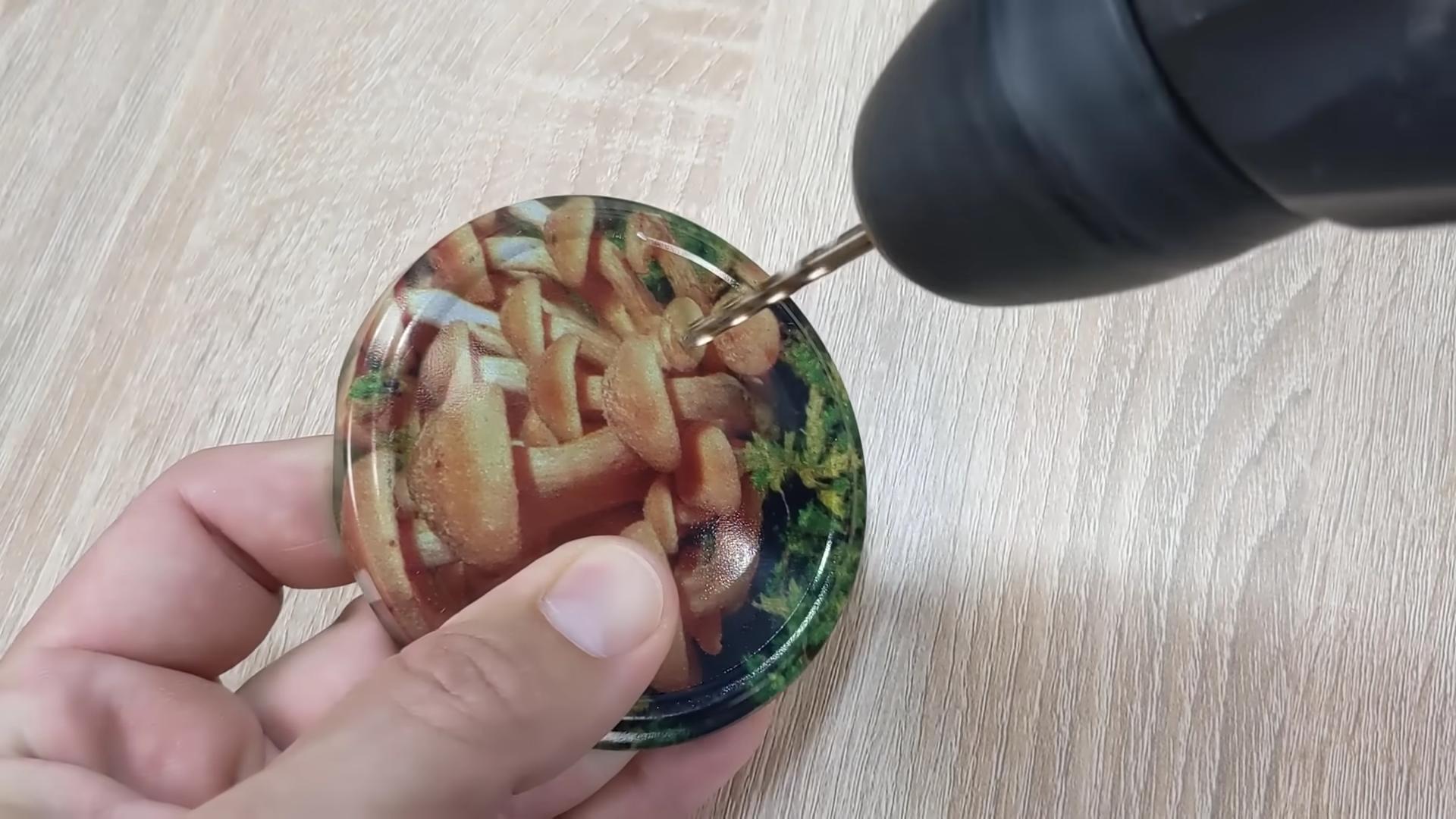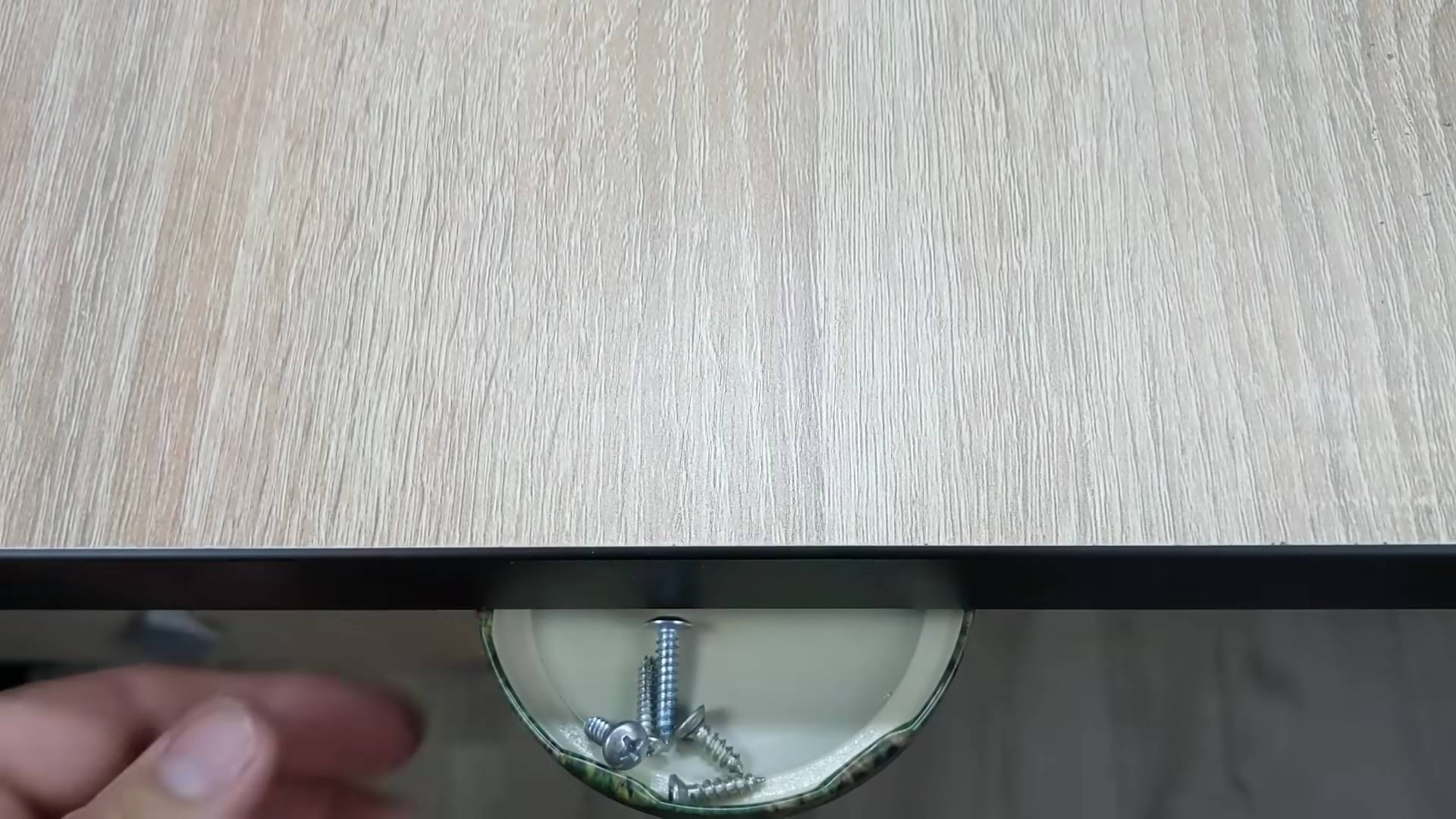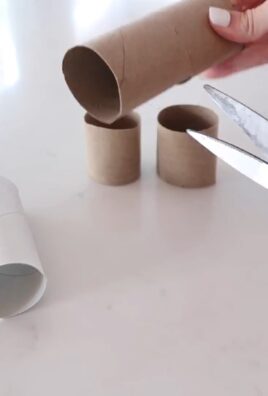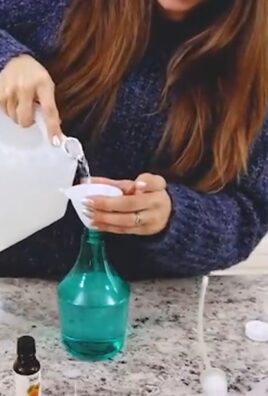Household DIY Hacks – ever feel like your home is whispering, “Help me!” but your wallet is screaming, “No more spending!”? I totally get it! We all crave a beautiful, functional space, but sometimes those home improvement projects feel like they require a second mortgage. But what if I told you that you could transform your living space with simple, clever, and budget-friendly DIY solutions?
For centuries, resourcefulness has been a cornerstone of home management. Think about it – our grandparents and great-grandparents didn’t have access to the endless stream of products we do today. They relied on ingenuity and creativity to solve everyday problems, passing down valuable skills and traditions. This spirit of “making do” is not only economical but also incredibly empowering.
That’s why I’m so excited to share these amazing Household DIY Hacks with you! Whether it’s tackling stubborn stains, organizing cluttered spaces, or adding a touch of personalized charm, these tips and tricks will help you reclaim your home and your budget. You’ll learn how to repurpose everyday items, create stunning décor on a dime, and solve common household dilemmas with ease. Get ready to unleash your inner DIY guru and transform your house into a happy, functional haven, one clever hack at a time!

DIY Magic: Transforming Everyday Items into Amazing Solutions
Let’s dive into some fantastic DIY hacks that will not only save you money but also add a touch of creativity to your home. I’m excited to share these simple yet effective tricks that I’ve personally tried and tested. Get ready to be amazed by how easily you can repurpose everyday items into something extraordinary!
Unclogging Drains Like a Pro: The Baking Soda & Vinegar Power Duo
Clogged drains are a common household nuisance, but you don’t always need harsh chemicals or a plumber to fix them. This natural solution is both effective and environmentally friendly.
What you’ll need:
* 1 cup baking soda
* 2 cups white vinegar
* Hot water
Step-by-step instructions:
1. Pour the Baking Soda: Start by pouring one cup of baking soda down the clogged drain. Try to get as much of it down the drain as possible.
2. Add the Vinegar: Next, slowly pour two cups of white vinegar down the drain, right after the baking soda.
3. The Fizzing Action: You’ll immediately notice a fizzing reaction. This is the magic happening! The baking soda and vinegar are reacting to break down the clog.
4. Let it Sit: Let the mixture sit for at least 30 minutes, or even better, overnight for stubborn clogs. This gives the solution enough time to work its way through the blockage.
5. Flush with Hot Water: After the waiting period, flush the drain with a generous amount of hot water. Let the water run for several minutes to ensure the clog is completely cleared.
6. Repeat if Necessary: If the drain is still slow, repeat the process one more time. Sometimes, a particularly stubborn clog needs a second dose of this powerful combination.
Reviving Dull Furniture: The Olive Oil & Lemon Juice Secret
Is your wooden furniture looking a little lackluster? Don’t rush out to buy expensive polishes! This simple DIY furniture polish will bring back the shine using ingredients you probably already have in your kitchen.
What you’ll need:
* 1/2 cup olive oil
* 1/4 cup lemon juice
* Soft cloth
Step-by-step instructions:
1. Mix the Ingredients: In a small bowl, combine the olive oil and lemon juice. The olive oil will moisturize the wood, while the lemon juice acts as a cleaner and adds a fresh scent.
2. Apply the Polish: Dip a soft cloth into the mixture and wring out any excess. You want the cloth to be damp, not dripping.
3. Wipe the Furniture: Gently wipe the furniture in the direction of the wood grain. Apply even pressure and cover the entire surface.
4. Buff to a Shine: Use a clean, dry cloth to buff the furniture to a beautiful shine. This will remove any excess polish and leave your furniture looking revitalized.
5. Admire Your Work: Step back and admire your beautifully polished furniture! This natural polish not only cleans but also protects the wood, keeping it looking its best.
Homemade Air Freshener: The Simmer Pot Method
Forget those artificial air fresheners filled with chemicals. This simmer pot method is a natural and delightful way to fill your home with a pleasant aroma.
What you’ll need:
* Pot or saucepan
* Water
* Your choice of aromatic ingredients (e.g., citrus slices, cinnamon sticks, cloves, rosemary sprigs, vanilla extract)
Step-by-step instructions:
1. Choose Your Scent: Get creative with your scent combinations! Some of my favorites include:
* Orange slices, cinnamon sticks, and cloves for a warm, spicy aroma.
* Lemon slices, rosemary sprigs, and vanilla extract for a fresh, clean scent.
* Apple slices, cinnamon sticks, and star anise for a cozy, autumnal fragrance.
2. Fill the Pot: Fill a pot or saucepan with water.
3. Add the Ingredients: Add your chosen aromatic ingredients to the water.
4. Simmer on Low: Place the pot on the stove and bring it to a simmer over low heat.
5. Enjoy the Aroma: Let the mixture simmer for as long as you want, adding more water as needed to prevent it from drying out. The simmering water will release the fragrant oils, filling your home with a natural and inviting scent.
6. Safety First: Never leave a simmering pot unattended. Always check the water level and add more as needed.
DIY Dusting Spray: The Vinegar & Essential Oil Blend
Commercial dusting sprays can be expensive and often contain harsh chemicals. This DIY dusting spray is a natural and effective alternative that will leave your furniture clean and smelling great.
What you’ll need:
* Spray bottle
* 1 cup water
* 1/4 cup white vinegar
* 10-15 drops of your favorite essential oil (e.g., lemon, lavender, tea tree)
* Soft cloth
Step-by-step instructions:
1. Combine the Ingredients: In a spray bottle, combine the water, white vinegar, and essential oil. The vinegar helps to cut through grease and grime, while the essential oil adds a pleasant scent and can also have antibacterial properties.
2. Shake Well: Shake the bottle well to ensure the ingredients are thoroughly mixed.
3. Spray and Wipe: Lightly spray the dusting spray onto a soft cloth. Avoid spraying directly onto the furniture, as this can cause damage.
4. Dust the Furniture: Wipe the furniture with the damp cloth, removing dust and dirt.
5. Buff to a Shine: Use a clean, dry cloth to buff the furniture to a shine.
6. Enjoy the Clean Scent: Enjoy the clean and fresh scent of your homemade dusting spray!
Removing Scratches from Wood Furniture: The Walnut Trick
Minor scratches on wood furniture can be unsightly, but you don’t need to refinish the entire piece to fix them. This simple trick using a walnut can help to conceal scratches and restore the wood’s appearance.
What you’ll need:
* Walnut (with the shell removed)
* Soft cloth
Step-by-step instructions:
1. Find a Walnut: Grab a walnut from your pantry. Make sure it’s a regular walnut, not a black walnut, as the latter can stain the wood.
2. Rub the Scratch: Gently rub the walnut over the scratch in the direction of the wood grain. The natural oils in the walnut will help to fill in the scratch and conceal it.
3. Buff the Area: Use a soft cloth to buff the area, removing any excess walnut oil.
4. Repeat if Necessary: If the scratch is still visible, repeat the process until it is sufficiently concealed.
5. Admire the Results: Step back and admire your scratch-free furniture! This simple trick can make a big difference in the appearance of your wood furniture.
Cleaning Burnt Pots and Pans: The Baking Soda Soak
Burnt food stuck to the bottom of your pots and pans can be a nightmare to clean.
Let’s dive into some fantastic DIY hacks that will not only save you money but also add a touch of creativity to your home. I’m excited to share these simple yet effective tricks that I’ve personally tried and tested. Get ready to be amazed by how easily you can repurpose everyday items into something extraordinary!
Unclogging Drains Like a Pro: The Baking Soda & Vinegar Power Duo
Clogged drains are a common household nuisance, but you don’t always need harsh chemicals or a plumber to fix them. This natural solution is both effective and environmentally friendly.
What you’ll need:
* 1 cup baking soda
* 2 cups white vinegar
* Hot water
Step-by-step instructions:
1. Pour the Baking Soda: Start by pouring one cup of baking soda down the clogged drain. Try to get as much of it down the drain as possible.
2. Add the Vinegar: Next, slowly pour two cups of white vinegar down the drain, right after the baking soda.
3. The Fizzing Action: You’ll immediately notice a fizzing reaction. This is the magic happening! The baking soda and vinegar are reacting to break down the clog.
4. Let it Sit: Let the mixture sit for at least 30 minutes, or even better, overnight for stubborn clogs. This gives the solution enough time to work its way through the blockage.
5. Flush with Hot Water: After the waiting period, flush the drain with a generous amount of hot water. Let the water run for several minutes to ensure the clog is completely cleared.
6. Repeat if Necessary: If the drain is still slow, repeat the process one more time. Sometimes, a particularly stubborn clog needs a second dose of this powerful combination.
Reviving Dull Furniture: The Olive Oil & Lemon Juice Secret
Is your wooden furniture looking a little lackluster? Don’t rush out to buy expensive polishes! This simple DIY furniture polish will bring back the shine using ingredients you probably already have in your kitchen.
What you’ll need:
* 1/2 cup olive oil
* 1/4 cup lemon juice
* Soft cloth
Step-by-step instructions:
1. Mix the Ingredients: In a small bowl, combine the olive oil and lemon juice. The olive oil will moisturize the wood, while the lemon juice acts as a cleaner and adds a fresh scent.
2. Apply the Polish: Dip a soft cloth into the mixture and wring out any excess. You want the cloth to be damp, not dripping.
3. Wipe the Furniture: Gently wipe the furniture in the direction of the wood grain. Apply even pressure and cover the entire surface.
4. Buff to a Shine: Use a clean, dry cloth to buff the furniture to a beautiful shine. This will remove any excess polish and leave your furniture looking revitalized.
5. Admire Your Work: Step back and admire your beautifully polished furniture! This natural polish not only cleans but also protects the wood, keeping it looking its best.
Homemade Air Freshener: The Simmer Pot Method
Forget those artificial air fresheners filled with chemicals. This simmer pot method is a natural and delightful way to fill your home with a pleasant aroma.
What you’ll need:
* Pot or saucepan
* Water
* Your choice of aromatic ingredients (e.g., citrus slices, cinnamon sticks, cloves, rosemary sprigs, vanilla extract)
Step-by-step instructions:
1. Choose Your Scent: Get creative with your scent combinations! Some of my favorites include:
* Orange slices, cinnamon sticks, and cloves for a warm, spicy aroma.
* Lemon slices, rosemary sprigs, and vanilla extract for a fresh, clean scent.
* Apple slices, cinnamon sticks, and star anise for a cozy, autumnal fragrance.
2. Fill the Pot: Fill a pot or saucepan with water.
3. Add the Ingredients: Add your chosen aromatic ingredients to the water.
4. Simmer on Low: Place the pot on the stove and bring it to a simmer over low heat.
5. Enjoy the Aroma: Let the mixture simmer for as long as you want, adding more water as needed to prevent it from drying out. The simmering water will release the fragrant oils, filling your home with a natural and inviting scent.
6. Safety First: Never leave a simmering pot unattended. Always check the water level and add more as needed.
DIY Dusting Spray: The Vinegar & Essential Oil Blend
Commercial dusting sprays can be expensive and often contain harsh chemicals. This DIY dusting spray is a natural and effective alternative that will leave your furniture clean and smelling great.
What you’ll need:
* Spray bottle
* 1 cup water
* 1/4 cup white vinegar
* 10-15 drops of your favorite essential oil (e.g., lemon, lavender, tea tree)
* Soft cloth
Step-by-step instructions:
1. Combine the Ingredients: In a spray bottle, combine the water, white vinegar, and essential oil. The vinegar helps to cut through grease and grime, while the essential oil adds a pleasant scent and can also have antibacterial properties.
2. Shake Well: Shake the bottle well to ensure the ingredients are thoroughly mixed.
3. Spray and Wipe: Lightly spray the dusting spray onto a soft cloth. Avoid spraying directly onto the furniture, as this can cause damage.
4. Dust the Furniture: Wipe the furniture with the damp cloth, removing dust and dirt.
5. Buff to a Shine: Use a clean, dry cloth to buff the furniture to a shine.
6. Enjoy the Clean Scent: Enjoy the clean and fresh scent of your homemade dusting spray!
Removing Scratches from Wood Furniture: The Walnut Trick
Minor scratches on wood furniture can be unsightly, but you don’t need to refinish the entire piece to fix them. This simple trick using a walnut can help to conceal scratches and restore the wood’s appearance.
What you’ll need:
* Walnut (with the shell removed)
* Soft cloth
Step-by-step instructions:
1. Find a Walnut: Grab a walnut from your pantry. Make sure it’s a regular walnut, not a black walnut, as the latter can stain the wood.
2. Rub the Scratch: Gently rub the walnut over the scratch in the direction of the wood grain. The natural oils in the walnut will help to fill in the scratch and conceal it.
3. Buff the Area: Use a soft cloth to buff the area, removing any excess walnut oil.
4. Repeat if Necessary: If the scratch is still visible, repeat the process until it is sufficiently concealed.
5. Admire the Results: Step back and admire your scratch-free furniture! This simple trick can make a big difference in the appearance of your wood furniture.
Cleaning Burnt Pots and Pans: The Baking Soda Soak
Burnt food stuck to the bottom of your pots and pans can be a nightmare to clean. But don’t despair! This baking soda soak will loosen the burnt food and make it much easier to scrub away.
What you’ll need:
* Baking soda
* Water
* Scrubbing sponge or brush
Step-by-step instructions:
1. Cover the Burnt Area: Sprinkle a generous amount of baking soda over the burnt food in the pot or pan.
2. Add Water: Add enough water to cover the burnt area.
3. Bring to a Simmer: Place the pot or pan on the stove and bring the water to a simmer.
4. Simmer for 15-20 Minutes: Let the mixture simmer for 15-20 minutes, or until the burnt food begins to loosen.
5. Let it Cool: Remove the pot or pan from the heat and let it cool slightly.
6. Scrub Away: Use a scrubbing sponge or brush to scrub away the loosened burnt food. You may need to use a little elbow grease, but the baking soda soak should make the process much easier.
7. Wash as Usual: Wash the pot or pan as usual with soap and water.
8. Repeat if Necessary: For particularly stubborn burnt food, you may need to repeat the process one more time.
Making Your Own Laundry Detergent: The Borax & Washing Soda Blend
Commercial laundry detergents can be expensive and often contain harsh chemicals. This DIY laundry detergent is a natural and cost-effective alternative that will leave your clothes clean and fresh.
What you’ll need:
* 1 cup Borax
* 1 cup washing soda (sodium carbonate)
* 1 bar of soap (e.g., Fels

Conclusion
So, there you have it! This simple yet incredibly effective DIY trick is more than just a clever way to save money; it’s about taking control of your household needs and crafting solutions that are perfectly tailored to your preferences. We’ve explored how to create your own [Household DIY Hacks], and hopefully, you’re now brimming with ideas and ready to put them into action.
Why is this a must-try? Because it empowers you to reduce waste, customize products to your exact liking, and often, achieve results that are superior to store-bought alternatives. Think about it: no more settling for generic scents, harsh chemicals, or exorbitant prices. You’re in the driver’s seat, creating a home environment that is both healthier and more aligned with your values.
But the fun doesn’t stop here! The beauty of DIY lies in its adaptability. Feel free to experiment with different essential oils to create unique fragrance blends for your homemade cleaners. Try adding a touch of natural dye to your DIY laundry detergent for a pop of color (just be sure it’s color-safe!). Consider infusing your own vinegar with herbs for an extra boost of cleaning power. The possibilities are truly endless.
Variations to Explore:
* Scent Customization: Play around with different essential oil combinations. Lavender and tea tree offer antibacterial properties and a calming scent, while citrus oils like lemon and orange provide a refreshing and invigorating aroma.
* Ingredient Swaps: If you’re sensitive to certain ingredients, don’t be afraid to substitute them with alternatives. For example, if you’re allergic to vinegar, you could try using citric acid instead.
* Packaging Options: Get creative with your storage solutions. Repurpose old spray bottles, mason jars, or even glass containers to store your homemade products. Just be sure to label them clearly!
* Strength Adjustments: Tailor the concentration of your ingredients to suit your specific needs. If you have particularly stubborn stains, you might want to increase the amount of cleaning agent in your solution.
We wholeheartedly encourage you to give these [Household DIY Hacks] a try. Not only will you save money and reduce waste, but you’ll also gain a sense of accomplishment and creativity. Plus, you’ll be contributing to a more sustainable lifestyle.
Don’t just take our word for it – dive in, experiment, and discover the joy of creating your own household solutions. And most importantly, we want to hear about your experiences! Share your tips, tricks, and variations in the comments below. Let’s build a community of DIY enthusiasts who are passionate about creating a cleaner, healthier, and more sustainable home. We can’t wait to see what you come up with!
Frequently Asked Questions (FAQ)
What are the benefits of using [Household DIY Hacks] instead of store-bought products?
There are numerous advantages to embracing DIY household solutions. Firstly, it’s significantly more cost-effective. You’ll be amazed at how much money you can save by making your own cleaners, detergents, and other household essentials using inexpensive ingredients you likely already have on hand. Secondly, DIY allows you to control the ingredients, avoiding harsh chemicals, artificial fragrances, and other potentially harmful substances found in many commercial products. This is particularly beneficial for individuals with allergies, sensitivities, or young children. Thirdly, DIY promotes sustainability by reducing plastic waste and reliance on mass-produced goods. Finally, it’s a fun and rewarding activity that allows you to express your creativity and customize products to your exact preferences.
Are [Household DIY Hacks] as effective as store-bought products?
In many cases, yes! The effectiveness of DIY solutions depends on the specific recipe and the quality of the ingredients used. However, many DIY recipes utilize powerful cleaning agents like vinegar, baking soda, and essential oils, which have been proven to be highly effective at removing dirt, grime, and bacteria. Furthermore, you can often adjust the concentration of ingredients to suit your specific cleaning needs. For example, if you’re dealing with a particularly stubborn stain, you can increase the amount of cleaning agent in your solution. It’s always a good idea to test DIY solutions on a small, inconspicuous area first to ensure they don’t damage the surface.
What are some essential ingredients to have on hand for [Household DIY Hacks]?
Building a well-stocked DIY pantry will make it easier to whip up homemade solutions whenever you need them. Some essential ingredients to keep on hand include:
* White Vinegar: A versatile cleaning agent that can be used for everything from disinfecting surfaces to removing hard water stains.
* Baking Soda: A natural deodorizer and mild abrasive that’s perfect for scrubbing surfaces and removing odors.
* Essential Oils: Add fragrance and antibacterial properties to your DIY solutions. Popular choices include lavender, tea tree, lemon, and eucalyptus.
* Castile Soap: A gentle and effective cleanser that can be used for a variety of purposes, from hand soap to laundry detergent.
* Washing Soda: A powerful cleaning agent that’s particularly effective at removing grease and stains from laundry.
* Borax: A natural mineral that can be used as a laundry booster and cleaning agent. (Use with caution and keep out of reach of children and pets.)
* Citric Acid: A natural acid that can be used to remove hard water stains and brighten laundry.
* Distilled Water: Used as a base for many DIY solutions.
Are there any safety precautions I should take when making and using [Household DIY Hacks]?
Yes, safety should always be a top priority when making and using DIY household solutions. Here are some important precautions to keep in mind:
* Label Everything Clearly: Always label your DIY solutions with the name of the product and the ingredients used. This will prevent accidental misuse or ingestion.
* Store Properly: Store your DIY solutions in airtight containers in a cool, dry place, away from direct sunlight and heat.
* Keep Out of Reach of Children and Pets: Store all DIY solutions out of reach of children and pets to prevent accidental ingestion or contact.
* Wear Gloves: When working with strong cleaning agents like borax or washing soda, wear gloves to protect your skin.
* Avoid Mixing Certain Ingredients: Never mix bleach with ammonia or vinegar, as this can create toxic fumes.
* Test on a Small Area First: Before using a DIY solution on a large surface, test it on a small, inconspicuous area to ensure it doesn’t damage the material.
* Ventilate the Area: When using DIY solutions, especially those with strong scents, ventilate the area to avoid inhaling excessive fumes.
Can I use [Household DIY Hacks] on all surfaces?
Not all DIY solutions are suitable for all surfaces. Some ingredients, like vinegar, can damage certain materials like marble, granite, and waxed wood. Always research the compatibility of your DIY solution with the surface you intend to clean. When in doubt, test the solution on a small, inconspicuous area first. For delicate surfaces, consider using milder cleaning agents like castile soap or diluted vinegar.
How can I make my [Household DIY Hacks] more eco-friendly?
There are several ways to make your DIY household solutions even more eco-friendly:
* Use Sustainable Ingredients: Choose ingredients that are sustainably sourced and biodegradable.
* Repurpose Containers: Reuse old spray bottles, mason jars, and other containers to store your DIY solutions.
* Reduce Packaging: Buy ingredients in bulk to reduce packaging waste.
* Compost Food Scraps: Compost food scraps instead of throwing them away.
* Use Reusable Cleaning Cloths: Replace paper towels with reusable cleaning cloths.
* Conserve Water: Use water sparingly when cleaning.
What if I don’t have all the ingredients listed in a recipe?
The beauty of DIY is that you can often substitute ingredients based on what you have available. However, it’s important to understand the purpose of each ingredient before making substitutions. For example, if a recipe calls for vinegar as a disinfectant, you could substitute it with lemon juice, which also has antibacterial properties. If you’re unsure about a substitution, it’s always best to research it first or consult with a DIY expert.
How long do [Household DIY Hacks] last?
The shelf life of DIY household solutions varies depending on the ingredients used. Solutions containing water or other perishable ingredients may only last for a few weeks, while solutions containing vinegar or alcohol can last for several months. To extend the shelf life of your DIY solutions, store them in airtight containers in a cool, dry place, away from direct sunlight and heat. Always check for signs of spoilage, such as discoloration, odor, or separation, before using a DIY solution.




Leave a Comment